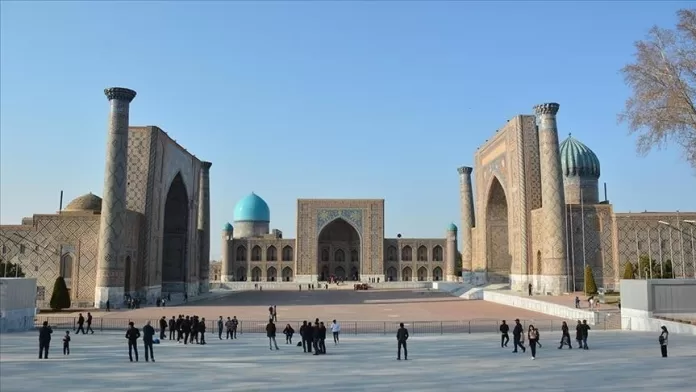The Republic of Uzbekistan, land of light, human wisdom and the custodian of ancient civilization has successfully surpassed all the hardships and achieved high standards of economic growth, social development, political participation and above all democratization process in the country. Its journey has now reached the shores of stability and sustainability; the sky is the limit.
Within a short span of time Uzbekistan has transformed its macro-economy from a raw-material based economy to knowledge-based economy. Initially it was inflicted with a destructive monopoly of cotton production and gradually revolutionized into a dynamically growing country with a massive industrialization. Uzbekistan’s economy has grown 4.1 times, and in per capita terms it multiplied at least threefold. The public external debt of the country never reached beyond 16 percent of the GDP, while the internal debt has a zero valuation, amid the mounting volumes of exports and gold and currency reserves. It attracted more than US$ 56 billion of FDIs. The volume of capital investments in 2013 is to make up US$14 billion, which is 23 percent of the GDP.
Now more than 300 investment projects/programs worth US$55.4 billion are being carried out. According to its official figures the government plans to direct US$15.3 billion to the oil and gas sector and US$12.1 billion to oil and gas chemistry, US$7.2 billion to transport, US$5.8 billion to the energy sector and US$4.4 billion to the mining and metallurgy industry, among other investments.
According to many statistical reports of Asian Development Bank (ADB) and International Monetary Fund (IMF), Uzbekistan has achieved miraculous socio-economic development since its independence. It enjoyed robust gross domestic product (GDP) growth since the mid-2000s averaging 8 percent annually due mainly to three factors are given below as:
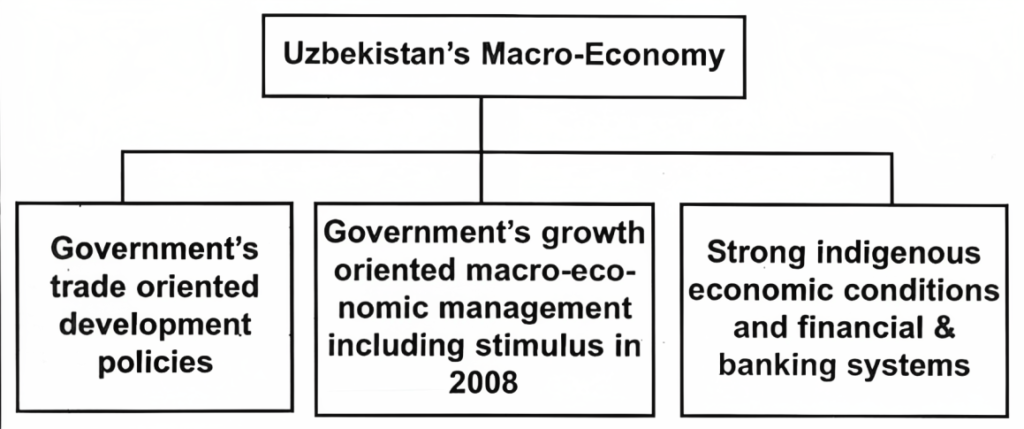
Sustained Marco-Economic Growth
According to ADB (2013-2014), Uzbekistan’s GDP remained healthy at 8.0 percent in 2013, largely led by wage and pension increases, high public investment spending, and large remittances. Recovery in external demand raised the current account surplus to 3.7 percent of GDP. Continued high public spending, strong private consumption, and an improving external environment are projected to keep growth near 8.0 percent in 2014 and 2015.
Comparative study of different research papers and reports of the ADB and IMF suggested that Uzbekistan’s GDP grew by 8.0 percent, down slightly from 8.2 percent in 2012 but making 2013 the seventh consecutive year of growth at 8.0 percent or better. On the supply side, the main contributors to constant economic growth were industry including construction, which expanded by 9.0 percent up from 8.0 percent in 2012 and services at 8.8 percent.
Rapid Industrialization
In industry, the ongoing modernization program, backed by substantial public investment and recovering external demand, substantially boosted the production of machinery, textiles, construction materials, and foodstuffs in the country. Now Uzbekistan is one of the advanced industrialized countries in the CIS.
Services Sector
Services posted healthy growth as retail trade, telecommunications, finance, and catering all recorded double-digit increases. The continuing housing boom raised construction growth to 16.6 percent from 11.5 percent in 2012. Agriculture grew by 6.8 percent supported by favorable weather and record harvests of the key cereal and vegetable crops.
Economic Prosperity all the way
On the demand side, wage and pension increases and substantial remittance inflows boosted private consumption, while net exports also increased. The government raised public sector wages and pensions by 21 percent in 2013 and maintained large-scale public investment in industry and housing. State investment spending grew by 11.0 percent to $11.3 billion, enabling gross fixed capital formation to rise by 19.8 percent following 11.1 percent growth in 2012. The government reported that inflation in 2013 was 6.8 percent below the 7 percent-9 percent target range set by the Central Bank of Uzbekistan.
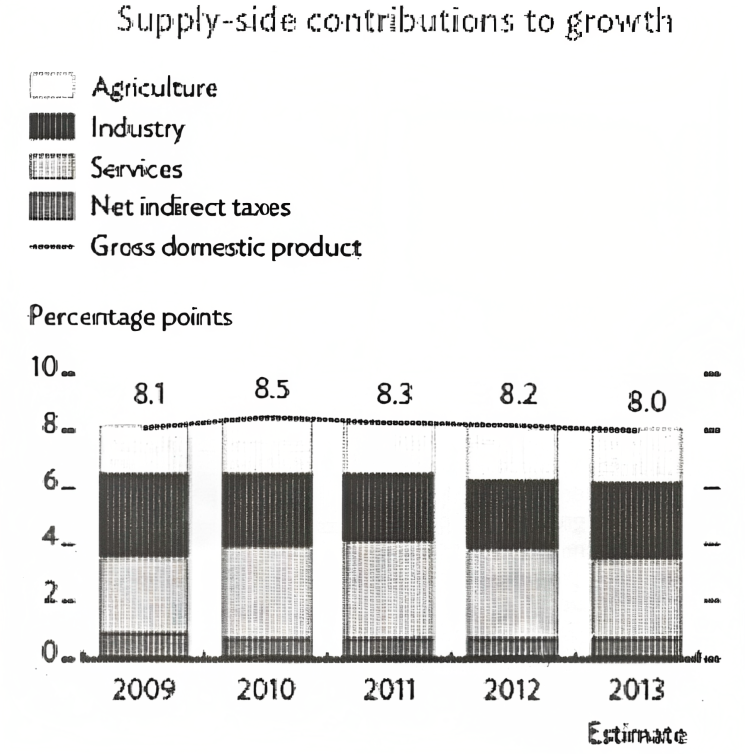
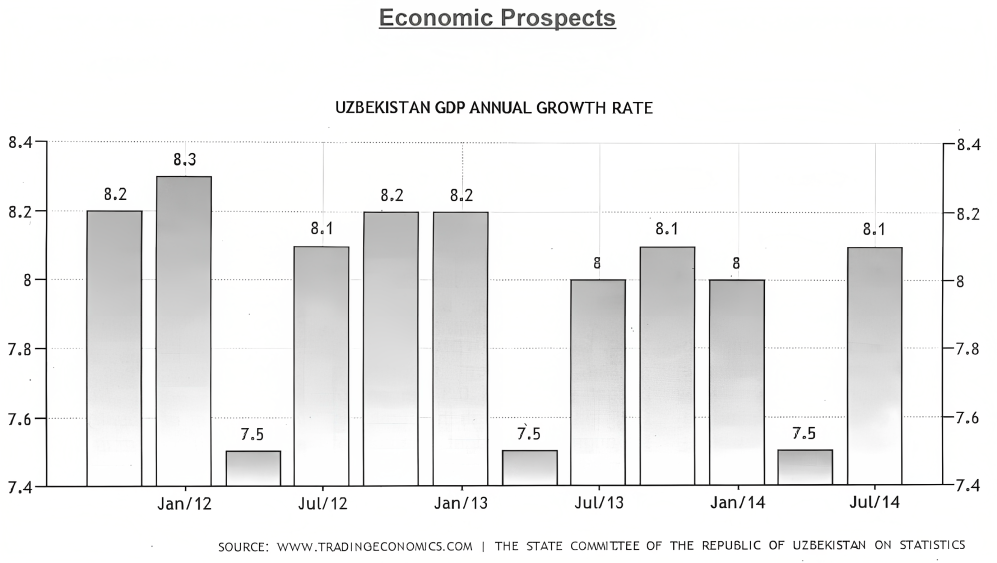
a. Higher government spending and private consumption
Higher government spending and private consumption are projected to support growth at 8.0 percent in 2014 and 7.8 percent in 2015. Improvement in the external environment should raise demand for exports. On the supply side, investment-led industry and consumption-led services will remain the key drivers of growth. Planned wage and pension increases exceeding the inflation rate should, combined with remittances, boost private consumption and promote services. Agriculture is projected to grow by 6.5 percent each year, reflecting stable production in cotton and wheat.
b. Government’s large-scale investment
It is hoped that the government will continue its large-scale investment program, which is set to conclude by 2015. Its aim is to increase industry’s share of GDP to 28 percent in 2015 from 24 percent in 2013. The state investment program for 2014 envisages an investment package of $14.3 billion equal to 23 percent of GDP, of which $3.9 billion is to be financed externally. Gross fixed capital formation is forecast to rise by 10 percent in 2014 and 13 percent in 2015.
c. Budget Surplus
The government reported a budget surplus of 0.3 percent of GDP in 2013, though the surplus in the augmented budget. The current account surplus grew to 3.7 percent of GDP, reflecting a larger trade surplus, as external demand started to recover and destinations for key exports diversified. Despite lower international prices, export earnings grew by 14.7 percent mainly on higher gas exports.
Resilient Banking Industry
The government of Uzbekistan recognizes the importance of financial sector reforms and supports financial activities through a variety of legal and regulatory frameworks, the most important being Presidential Resolution No. 1438 of November 2010:
“On Priority Areas for Further Reforms and Sustainability Improvement of Country’s Finance and Banking System in 2011–2015 and Achieving High International Ratings. This resolution elaborates priorities for further reform including comprehensive programs for banks, nonbank institutions, and microfinance, and covering the extension of nonbank credit networks and their range of services”.
The government’s reform agenda is to maintain the sector using state support, credit infrastructure, risk management, and banking supervision. Additional reforms are needed to prioritize private sector access to finance through competition, diversification, and market driven allocation and distribution of resources. These additional reforms would strengthen the ability of banks to provide efficient intermediation, thereby supporting government targets for growth and improved well-being.
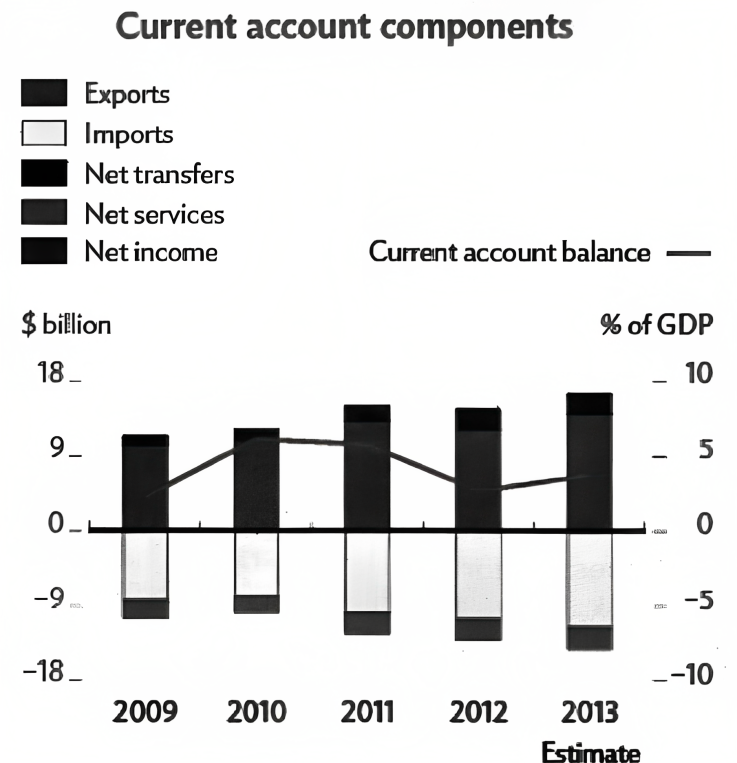
Moody’s International Rating Agency (April, 2014)
Moody’s international rating agency published a report with forecasts on the development of the Uzbek banking system whereby the agency has confirmed the system’s progress as “stable” for the fifth year in a row.
According to Moody’s, the stable forecast is provided by the high rates of economic growth in Uzbekistan accompanied by considerable volumes of investments. It cited as positively influencing the forecast include the steadfast incomes of Uzbek banks that ensure the capital for funding the growth in loans.
It is estimated that Uzbekistan’s economy would remain productive for the longer term too which showed elements of diversification, industrialization, knowledge based economy, human resource development and the last but not the least, export oriented policies in its macro-economy.
According to the Moody’s recent report the quality of assets of Uzbek banks would be steady and stable because of encouraging trends in capital investments. In 2013, the total sum of assets of Uzbekistan’s commercial banks grew by 30 percent, while for the last five years this indicator has multiplied 3.6 times.
Furthermore, targeted measures geared to boost the capitalization of the banking system have helped secure a 3.5 times growth in the aggregate capital of banks within the last five years, and in the year 2013 alone the aggregate capital increased by 25.1 percent. In the meantime, the level of capital adequacy in the banking system is three times as high as the universal international standards. It anticipated that the liquidity indicators and profitability of Uzbek banks would remain stable within the forecast period.
Uzbekistan’s banking sector has promoted industrial development by channeling public investment to strategic industries and increasing total bank lending, while keeping banks sound. At the end of 2013, the sector’s capital adequacy ratio reached 24.3 percent. Aggregate capital in the banking sector rose by 25 percent, helping expand total credit by 31 percent. Moody’s Investors Service (August, 2013), issued a stable outlook for the country’s banking sector, citing healthy bank profits, improvements in asset quality, stable liquidity, limited reliance on wholesale funding.
Process of Politicization and Democratization
President H.E. Mr. Islam Karimov delivered a key-note speech on the eve of 23rd Anniversary of Independence of the Republic of Uzbekistan and Congratulated the nation for celebrating the national day with great happiness and delight the truly greatest, the dearest and unforgettable date in the glorious history of Uzbekistan.
The President said:
“Today as we celebrate the 23rd anniversary of our independence and assess the work we have carried out in building a democratic state and civil society and joining the ranks of the developed countries of the world”
He pinpointed wide range of socio-economic, political and democratic achievements in the past by saying:
“Indeed, we are profoundly proud that all our achievements in building the national statehood, the large-scale progressive reforms that resulted in stable growth rates of our economy, growth of living standards of our population and continuous improvement of the look of our country, are worthily recognized in the international arena and raise our authority and respect towards us”.
Islam Karimov explained that in the years of independent development national economy grew about 5 times or per capita 3.7 times, and the income per capita, which serves as a confirmation of growth of living standards of our population, grew 8.7 times. These indices prove that during a short period of time Uzbekistan once a republic unable to sustain itself has turned into a modern state with rapid growth rates.
He proudly mentioned that despite the ongoing global financial and economic crisis, during the last 10 years the annual growth rate of Uzbekistan’s economy has exceeded 8 percent and such a stable progress can now be observed just in few countries.
“More than 180 billion dollars (including over 60 billion dollars of foreign investments) have been channeled to our economy to develop our country with such high growth rates, modernize it and implement the large-scale reforms he added.
Since its inception, Uzbekistan despite difficult external and internal circumstances Uzbekistan has established stable political and economic institutions and has maintained security for its people. It is blessed with natural resources, human resources and rich cultural heritage that should foster a new generation proud of its past, but ready to meet the challenges of the future.
| Period | Details |
| 1991-2000 | It successfully completed the transition period from an administrative-command system of governance to a democratic state with market economy. The first ten years of Independence (1991-2000) were dedicated to creating the very foundations of Uzbekistan’s statehood. |
| 2001-2010 | It marked the transition from a strong state to a strong civil society. |

Right from the beginning, Uzbekistan has implemented meaningful reforms in order to build a democratic state with a socially oriented market economy and a strong civil society. Adopted 20 years ago on 8 December 1992, the Constitution of the Republic of Uzbekistan was adopted on (December, 1992). It was established on five principles of the “Uzbek model” of development, elaborated by the President of Uzbekistan Islam Karimov, which prioritizes economics over politics, state as the main reformer, rule of law, strong social policy, and gradual and evolutionary reforms.
“A human being, his/her life, freedom, honour, dignity and other inalienable rights were declared as the highest value became the solid legal foundation for achieving these goals”.
Establishment of Comprehensive Legal System
The adoption of the Constitution laid the foundation for creating a comprehensive legal system in Uzbekistan, and provided the means for the country’s Parliament to adopt 15 codes, over 600 laws, and ratify more than 200 multilateral international treaties.
The Concept of Further Deepening Democratic Reforms and Formation of Civil Society
Political reforms have been a systematic and consistent character since its inception. Uzbekistan President developed ‘The Concept of Further Deepening Democratic Reforms and Formation of Civil Society’ (November, 2010), which represented a strategy of logical continuation of democratic reforms in the framework of the Constitution.
Law ‘On Introduction of Changes and Amendments To some Articles of the Constitution of Uzbekistan
The Law ‘On Introduction of Changes and Amendments to some Articles of the Constitution of Uzbekistan (Articles 78, 80, 93, 96 and 98)’ was adopted in March 2011. The Law aimed at further democratization of state power and management, ensuring a more balanced distribution of powers between three subjects of the state authority: the President (head of state), Legislative and Executive branches. A part of the President’s authority was transferred to the Senate, while the Prime Minister’s powers were strengthened.
Formation of Advanced Election System “From a Strong State to a Strong Civil Society”
The principle ‘From a Strong State to a Strong Civil Society,’ has been instrumental in forming an advanced election system in Uzbekistan. Regular multi-party elections clearly demonstrate the implementation of the citizens’ right to vote, as well as contributing to the growth of their social and political activity.
Liberalization of Legal System & Independence of Judiciary
Many radical reforms have been implemented to liberalise the legal system. The independence of the Judiciary and specialisation of courts were confirmed, the Institution of Appeal was reformed, the Appellate Procedure for reviewing cases and the Institution of Reconciliation were introduced, and the equality of all sides at all stages of the legal process was guaranteed. From 1 January 2008 the death penalty was abolished in Uzbekistan. The courts were also empowered to issue sanctions for arrest (institute of ‘Habeas Corpus’).
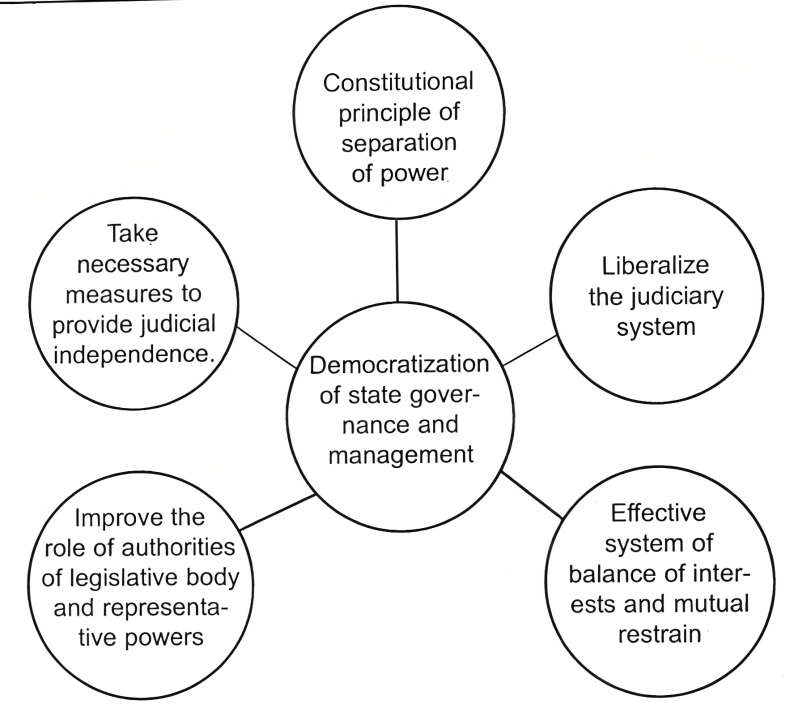
Human Rights
Based on the Universal Declaration of Human Rights, a system of national institutions was created that promotes the rule of law, and the protection of personal, political, economic, social and cultural rights of citizens throughout the country. A system of continuous education on human rights and the improvement of the legal culture of the population were also established.
Vibrant Civil Society
Implementation of different reforms has further strengthened the role, scope, utility and participation of civil society. Today there are over 6,000 NGOs operating in Uzbekistan in various spheres of life. They enjoy significant state support in the form of subsidies, grants and social orders.
Development of Information Sector
Ours is the age of information and virtual realities. A comprehensive framework is being set-up for the gradual democratic reform of the information sector. It is designed to formalise citizens’ constitutional right to the freedom of thought, expression and belief. Integral to this process is ensuring the transparency of reforms, openness of authority bodies, and strengthening the independence and economic self-sufficiency of the mass media. In the past ten years the number of print media outlets in the country has increased 1.5 times – today there are over 1,200 in Uzbekistan, most of which are privately owned.
Respecting Languages, Customs and Traditions of all Nations and Nationalities Living in the Country
Upholding of diversity, interreligious harmony and preservation and strengthening of an environment of peace and stability is one of the main achievements of Uzbekistan. It is guaranteed directly the constitutional principle of ‘Respecting Languages, Customs and Traditions of all Nations and Nationalities Living in the Country.’ Today, over 130 nationalities live peacefully together in Uzbekistan.
Progressive Constitutional Model
The Constitution of Uzbekistan embodies a new, progressive constitutional model. It creates all the necessary conditions for the evolutionary legal development of state and society, and their effective interaction in order to increase the efficiency of democratic reforms.
Comparative Study of Uzbekistan Social Policy (Before & After 2007)
| Before 2007 | After 2007 |
| Social orientation of transition period | Transition from ‘socially-oriented’ policy to ‘pro poor’ macroeconomic and institutional reforms |
| Full coverage of social policy to avoid sharp fall in living standards (in early years of transition) | Consolidation of all macroeconomic, sector and regional programs into a single strategy to provide complexity and synergies |
| Targeted measures of public policy against individual groups of population | Attempting to reconsider macroeconomic policy from ‘export led’ growth to ‘investment-led’ growth |
| Narrowing of coverage, strengthening of target measures and increasing of volumes of social assistance | Localization of national priorities and regional development strategies |
Guidelines and Priorities for Socio-Economic Policy
a. Technological Advancement, Industrialization, and Investments
According to priorities of socio-economic policy (2013-14), the years 2014 will mark the commissioning of major high-tech industries, modern facilities and capacities, growth and intensification of investment processes in Uzbekistan. Total volume of capital investment from all sources of funding will make up $14.3 billion with an increase 10.1 percent YOY, maintaining the share of investment in fixed assets to GDP at 23 percent, the level of 2013.
Moreover, 73 percent of all investments will be allocated to industrial construction, and 40 percent of capital investments will go to the purchase of machinery and equipment. It is projected to draw over $3.9 billion of foreign investments and loans with 29 percent increase YOY. It is noteworthy that 69 percent of total foreign investment is direct investment, which in 2014 will increase by 22.4 percent. In general, more than 150 big manufacturing facilities will be commissioned throughout the year with a total cost of $4.4 billion.
According to the UN report (2012-13), Uzbekistan recorded one of the highest economic growth rates in the Commonwealth of Independent States (CIS) in 2011 and 2012. Owning to which, it remained among the region’s most rapidly expanding economies as a result of broad industrial expansion.
Uzbekistan, with the goal of becoming an industrialized, high middle-income country by around 2050, is continuing to transition to a more market-oriented economy to ensure equitable distribution of growth between regions and to maintain infrastructure and social services.
b. Profitability of Enterprises and Creation of a favorable Business Environment
According to an official report, more than 140 enterprises across the country, including 67 big enterprises, are unprofitable which must be developed in order to speed-up pace of industrialization in the country. Creation of a favorable business environment should also be prioritized. Uzbekistan introduced the principle of priority rights of a business entity. Last year alone, the country canceled more than 80 types of licensing procedures and 15 licensed activities. More focus should be given to shortening, simplifying and cheapening of different licensing procedures for commissioning and management of business entities, as well as prevention and elimination of unnecessary bureaucratic barriers to entrepreneurship.
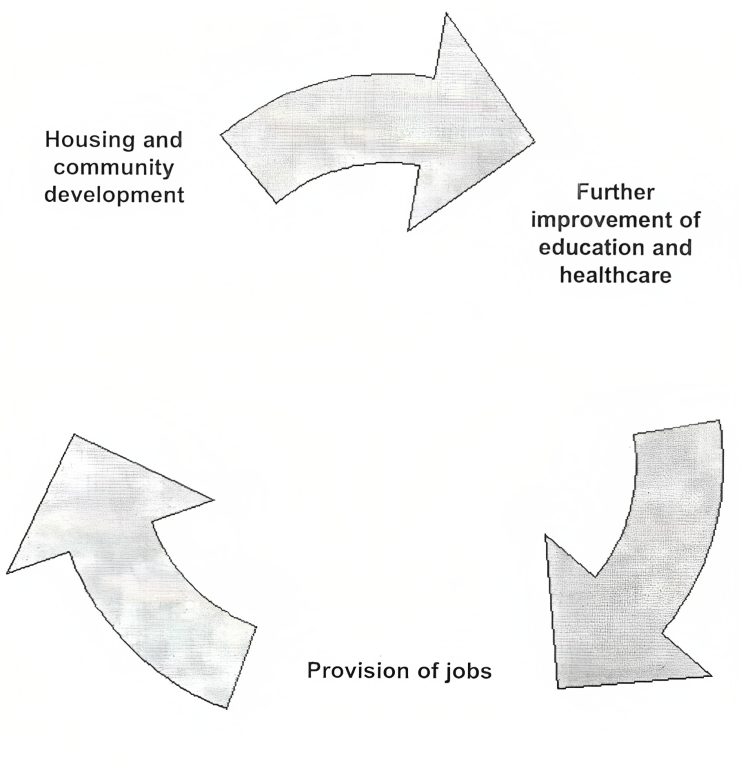
c. Institutionalization of E-Commerce
Further development of e-commerce is another important element of socio-economic policy. For further strengthening of e-commerce in the country it has issued more than 10 million plastic cards, including about 2.5 million online cards. More concrete efforts ought to be institutionalized in the field of e-commerce.
d. Rapid Social Development
One of the cornerstone of this policy is rapid social development i.e. provision of jobs, housing and community development, further improvement of education and healthcare remain in priority this year. In general, about 60 percent of all budget expenditures will be allocated to the social sector. Furthermore, a million jobs will be created in 2014, of which about 500,000 jobs would be for graduates of vocational colleges. 11,000 standard design houses with a total area of 1.5 million square meters will be built in 388 rural residential areas.
Previously, to speed-up the different social development programs Uzbekistan adopted a state programme “The Year of Well-being and Prosperity” in 2013. It consisted of 8 sections and 86 clauses, which determined main direction of social-economic, spiritual and political development of Uzbekistan and concretized mechanisms, ensuring improvement of population prosperity, social stability, peace and well-being in each family and society. State and non-governmental organizations, civil society institutes, self-governing bodies and citizens participated in its implementation. The document set concrete executors, terms of implementation, source of financing and monitoring system, etc. 6.655 trillion soums or US$919.2 million was directed to implementation of the said programme.
It increased well-being and real income of population and raised employment rates. It enhanced pace of small and private businesses, farms and improved state targeted welfare of population. It increased salaries of works of the budget organizations, pensions, stipends and allowances at least 23 percent in 2013.
e. Education
In education sector will receive over 410 billion soums. Reconstruction and overhauling of 380 schools and 161 vocational colleges and academic lyceums will also be carried out in 2014.
f. Health
Health sector will also be developed. It will envisage the construction of CIS’s first specialized multidisciplinary pediatric clinic of the level 4, which is the highest international standard, designed for 250 beds and a polyclinic for 200 visits per shift, at the expense of the Government of the Republic of Korea in the amount of $103 million. A total of over 407 billion soums will be allocated this year to strengthen the logistical capacity of healthcare institutions. More than $28 million of concessional loans will be attracted from international financial institutions to equip medical facilities.
Uzbekistan’s Future Policy Goals and Priorities
| Different Sectors/Sub-Sectors of Macro-Economy | Details |
| Infrastructure | Increase the efficiency of infrastructure, especially of energy, transport, and irrigation. |
| Qualitative Industrialization | Enhance the competitiveness of specific industries, such as agro-processing, petrochemicals, and textiles. |
| Diversification | Diversify the economy and reduction its reliance on commodity exports. |
| Social Development | Improve access to and the quality and outcomes of education, health and other social services |
| Reduction of Taxes | Income growth and decreasing tax burden. |
| Small and Medium Enterprises | Stimulating and developing small business and private entrepreneurship bear concrete positive benefit. |
Strategic Way-Forward
1. Further strengthening of political and macro-economic stability: Despite weak global economic conditions in the recent past its GDP constantly exceeded 8 percent in 2008-2013, while this indicator is projected at 8.1 percent in 2014.
2. Active structural reconstruction of macro-economy: Gradual economic liberalization, free market traditions and controlled global exposure.
3. Diversification of exports and value-addition: It has vast range of raw materials which needs to be tapped and developed properly. Uzbekistan is among the ten countries in gold reserves, natural gas, uranium, silver, copper, molybdenum and other rare metals. There are more than 1644 deposits and 100 types of mineral resources.
4. Energy self-sufficiency: Further diversification of energy resources and production.
5. Rigorous commercial diplomacy: It has advantageous geographical location in the centre of the largest regional markets, proximity to biggest markets and developed transport infrastructure of Uzbekistan. Foreign companies, investing in Uzbekistan, get an access to the major growing markets of CIS countries, Asia and Europe. Agreements on Most Favoured Nations Treatment with 45 countries, including USA, Japan, China, Korea, EU countries, and Free trade agreement between CIS countries, allow enhancing competitiveness of goods, produced in Uzbekistan on external markets.
6. Rapid and Diversified Industrialization: Uzbekistan has the most diversified and knowledge-based economy in the CIS. It produces wide range of automobiles and trucks, high quality agricultural machinery, chemical, textile, pharmaceutical, food products and building materials which should be further developed.
7. Qualitative Human Resource Management: Humans are the real assets of Uzbekistan. Almost 100 percent literacy, significant human and intellectual potential, system of education corresponding to international standards ought to be further developed.
8. Easing of Doing Business and Attraction of FDIs & FPIs: The investment legislation of Uzbekistan is one of the most advanced among CIS countries which must be further streamlined to attract more and more inflows of FDIs and FPIs.
9. Formation of Free Economic Zones: Uzbekistan has many free economic zones in the different parts aiming at establishing high-tech joint ventures connected to modern transport and logistics infrastructure enabling direct exports to the markets of the CIS, South and Southeast Asia, Middle East countries. More free economic zones should be built as soon as possible.
10. Joint Ventures: Cooperation with different regional countries and global power brokers for initiating different joint ventures in the field of oil & gas exploration, SME, infrastructure, ICT, technology, and the last but not the least, space sciences.
11. Provide general society information.
12. Establishment of innovation institutions.


